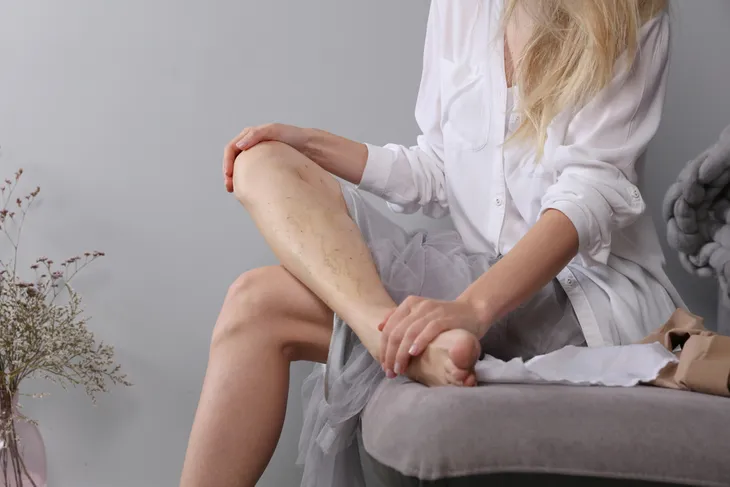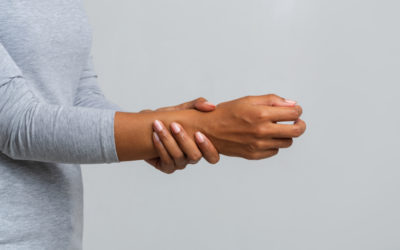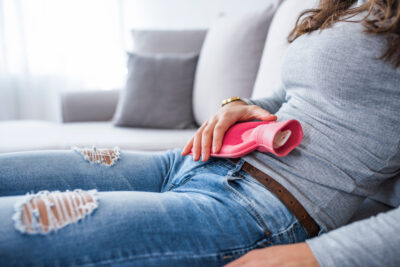Varicose veins, you know the ones that appear in snakes of raised, swollen blood vessels under the skin? They are unfairly more common in women than men. In fact, Dr. Cheryl McDonald from the National Institute of Health reports that “By the age of 50, nearly 40% of women and 20% of men will have some significant leg vein problem.”
Although varicose veins can develop on almost any area of the body, the legs and calves are the most commonly affected due to jobs or lifestyles where long durations of standing and walking put excess pressure on the veins in the body’s lower extremities. There’s a lot more to know about varicose veins too. Here are six facts you should know about varicose veins…
Common Causes of Varicose Veins
Sure, gravity is useful for some very important things in life, but when it comes to varicose veins, gravity is not your ally. Why? Because the veins in your body (that deliver blood back to the heart) are a strictly one-way mode of transport.
According to Medical News Today, this means your veins, particularly those in your lower extremities, have to put in a lot of extra effort to pump against gravity. So if a vein happens to suffer damage or weaken, blood will naturally pool in your lower half and cause bulging varicose veins to form.
Risk Factors for Varicose Veins
I already mentioned prolonged durations of sitting or standing in one place as contributors to varicose vein development. However, other factors do exist, according to Dr. Jeffrey G. Carr, Medical Director at the Vein Center of East Texas.
Dr. Carr points out to Prevention that genetics are the main contributing factor—with about 80-percent of patients directly related (I’m looking at you mom and dad) to an individual with varicose veins. When you can’t blame your genetics, weight gain due to pregnancy and obesity can also be a cause.
They Develop in Recurring Networks
Sadly, women don’t often develop just one, singular varicose vein. Prevention also tells us from the Spectrum Health Medical Group Vein Center, which specializes in cosmetic and therapeutic vein care in the U.S., says they tend to appear in collections.
Plus, if you’re prone to weak veins, due to heredity, chances are you will likely develop varicose veins in more than one area of the body. And more tragic news—once you start to develop varicose veins, they’re likely to regrow even with treatment.
Are Varicose Veins Harmful?
While a few varicose veins are not really considered a health threat, the discomfort and risk of developing an ulcer or blood clot can be very concerning. If you suffer from varicose veins without any symptoms—they may just pose a cosmetic embarrassment—which can be masked by concealer or getting some sun.
However, patients with varicose veins that cause tenderness, swelling, cramping, fatigue, burning, and heaviness in the lower extremities should seek treatment. Vascular pain can be a sign of a more serious health issue, such as an injury, ulcer, rupture, or a life-threatening blood clot.
Lifestyle Tips for Varicose Veins
While genetics are out of your control, certain lifestyle changes can help diminish or reduce your risk of developing varicose veins, according to research from the Journal of Applied Physiology. For instance, regular exercise can help get circulation flowing throughout the body after prolonged periods of sitting or standing in one spot.
Also, opt for loose, free-flowing clothing rather than tight-fitting duds that constrict blood flow. Wearing flat shoes rather than high heels will also be helpful, ladies, as it can shorten and restrict blood flow in the calves. Maintaining a healthy weight to promote adequate circulation and less pressure on your lower extremities will also help prevent varicose veins from developing.
Varicose Vein Treatments
If your varicose veins are causing you discomfort, the first step is to consult with your primary doctor who will likely recommend you to a dermatologist, phlebologist (which is a vein specialist), or a vascular surgeon for further consultation. Depending on the specialist and your needs, there are several non-surgical and surgical treatments available to permanently remove varicose veins.
Treatment options at the Spectrum Health Medical Group Vein Center include laser energy or radiofrequency techniques that employ heat to close and destroy damaged veins. VenaSeal, essentially medical-grade super glue, can also close and effectively eradicate multiple varicose veins. The final option is surgical removal (or vein stripping) varicose veins. Of course, maintaining the lifestyle tips indicated above will reduce the risk of varicose vein redevelopment.









